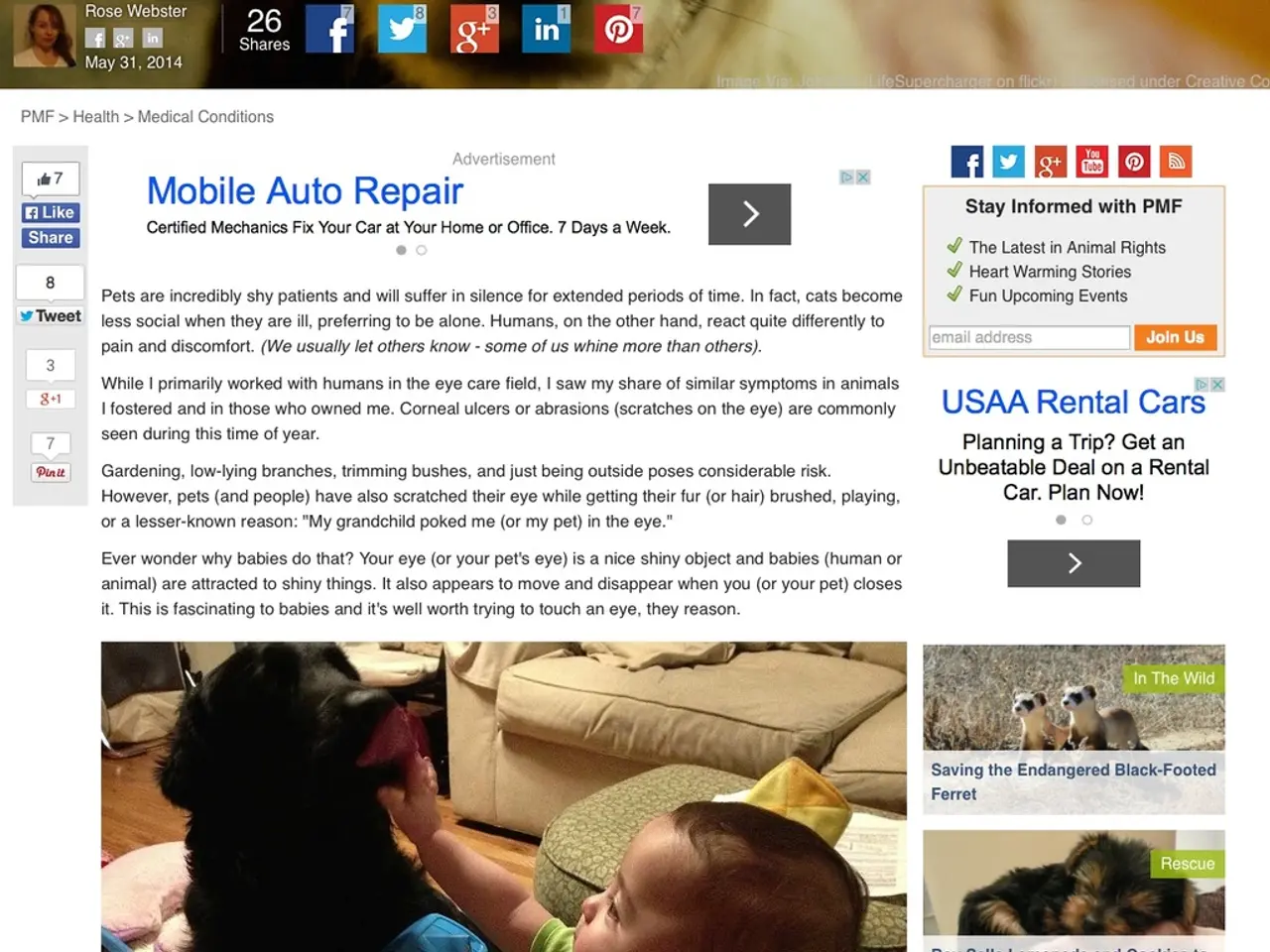Online Data Privacy Regulations for Website Owners and Developers
In the digital age, online dating has become a popular way for people to find love and form meaningful connections. As business owners in this sector, it's crucial to ensure that user privacy is respected and that your platform complies with the relevant laws and regulations. Here are some best practices for updating your privacy policy to achieve clarity, compliance, and build trust with your customers.
Regular and Timely Updates
Updating your privacy policy annually or whenever there are significant changes in data collection, processing, or sharing practices is essential. Keeping abreast of new laws and regulations, such as recent amendments to COPPA or local privacy acts (e.g., Oregon Consumer Privacy Act), is important to maintain compliance. Engage privacy and legal experts to conduct periodic audits and compliance reviews of your policy.
Clear and User-Friendly Language
Write your policy in plain, simple language, avoiding legal jargon and vague terms. Use visual aids such as bullet points, tables, icons, or infographics to present information clearly and to highlight key privacy points. Incorporate interactive elements like clickable sections to help users navigate the policy easily.
Transparency and Accessibility
Make the privacy policy easily accessible from multiple points on your website and provide it free of charge. Offer the policy in accessible formats, including oral provision upon request, to accommodate all users. Clearly disclose what data you collect, why you collect it, how it’s used, stored, and shared, and the rights users have regarding their data. Communicate proactively with users about any changes to the privacy policy via clear, timely notifications.
Compliance with Data Minimization and Security Best Practices
Collect only the personal data necessary for the intended purpose, minimizing unnecessary data collection. Implement and update security measures such as encryption, firewalls, access controls, and conduct regular security audits to protect data. Educate employees on data privacy and security to reduce risks.
User Rights and Control
Empower users by detailing how they can access, modify, delete their personal data, or opt out of certain data processing. Include provisions for handling data related to vulnerable groups, such as children, aligned with regulations like COPPA.
Flexible and Forward-Looking Approach
Adopt a principle-based framework that can adapt to evolving privacy laws and diverse jurisdictions. Embed privacy into product and system design from the outset to avoid costly retrofitting and to maintain user trust.
Additional considerations include third-party audits or certifications, such as ISO 27001, to demonstrate commitment to privacy and security. In case of a data breach, communicate openly and promptly with affected users, explaining the incident and corrective steps.
By following these practices, you foster greater user trust and legal compliance while maintaining clarity and accessibility in your privacy policy. It's essential for users of dating websites to understand how these platforms handle user data, ensuring a safer and more transparent digital dating experience for all.
Data-and-cloud-computing technology can be utilized to store sensitive user data securely and efficiently, thereby enhancing the privacy and security of online dating platforms. In the evolving landscape of data protection, it is crucial for these platforms to adopt a flexible, forward-looking approach, integrating privacy principles seamlessly into product development and design.




